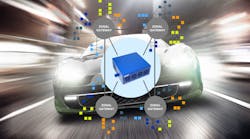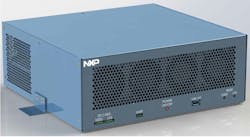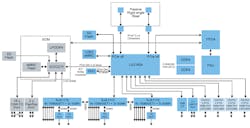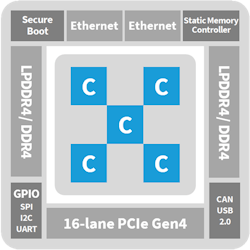>> Electronic Design Resources
.. >> Top Stories of the Week
.. .. >> CES 2021
NXP’s latest BlueBox automotive development platform incorporates the Kalray Coolidge neural-network processor for handling machine-learning/artificial-intelligence (ML/AI) chores. It looks like most industrial PCs, but it sports automotive Ethernet ports and ASIL-D and ISO 26262 certifiable hardware (Fig. 1).
The box is built around NXP’s LX2160A system-on-chip (SoC), which features 16 Arm A72 cores. Like the rest of the hardware, it’s designed to meet ASIL-D certification. The chip has multiple OPCI Express (PCIe) Gen 3 ports that tie into an FPGA and the S32G274 gateway SoC. The latter is found on a system-on-module (SOM) and interfaces with CAN, Flexray, and 100BASET1 automotive Ethernet ports (Fig. 2). An SJA1110 automotive Ethernet switch with time-sensitive-networking (TSN) support ties the ports together. In addition, there’s an M.2 socket for a NVMe solid-state drive.
Another major component is the aforementioned Kalray Coolidge machine-learning accelerator (Fig. 3). Coolidge is a massively parallel processor array (MPPA) chip. It contains 160 time-predictable, 64-bit cores. The network-on-chip (NoC) architecture uses a 2D-wrapped-around torus communication structure to connect the compute clusters and peripherals. It’s designed to do the ML/AI heavy lifting, allowing the LX212160A and S32G274 to handle system and real-time processing tasks.
The BlueBox comes in two versions: The BLBX-T2 has two PCIe ports, while the BLBX-T6 offers six. BlueBox 3.0 SDK software support targets the central compute as well as communication and machine-learning frameworks. This includes a Linux BSP and support for the Robot Operating System (ROS). ROS uses the latest data-distribution-service (DDS) intercommunication service.




